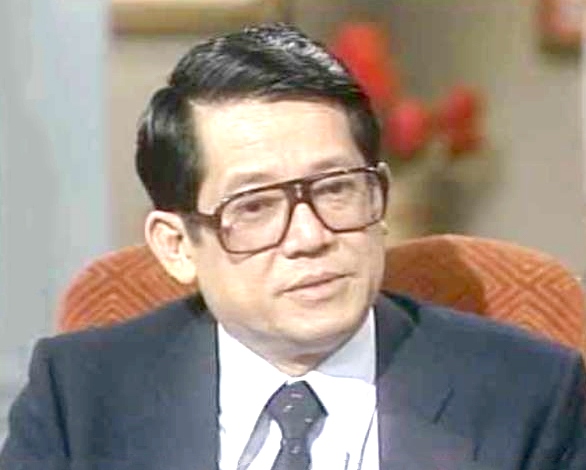Jaime Cardinal Sin and Ninoy Aquino, Jr.
The New York Times called Jaime Cardinal Sin (1928-2005) as “a Champion of the Poor in the Philippines.” Neither silent nor indifferent, His Eminence was a good shepherd who was always with his flock and “smelled like sheep.”
At EDSA, the Filipino youth today can visit the Wall of Remembrance, the most provident place of the non-violent People Power Revolution of 1986, which made Filipinos known as a brave and peaceful people among all global citizens.
Also engraved on that sacred Wall of Remembrance are the names of four valiant and uncompromising bishops who stood against Marcos abuses, namely: Most Rev. Julio Labayen, OCD; Most Rev. Antonio Fortich; Most Rev. Miguel Purugganan; and Jaime Cardinal Sin himself.

Cardinal Jaime Sin. YOUTUBE
The underprivileged, the marginalized, and the oppressed ran to them, who, knowing the risks and dangers of a military retaliation, straight away provided a sanctuary to them and others branded as “enemies of Martial Law.”
A repeat of history: 1872 and 1972
What followed the Cavite Mutiny was a period best described by historian O.D. Corpuz as the “Terror of 1872,” which triggered a wave of arrests, executions, imprisonment and exile that silenced a whole generation. The “Terror of 1972,” 100 years later, was Martial Law.
The 1872 Gomburza execution sparked the rise of the Propaganda Movement and the Katipunan that eventually led to the 1896 Philippine Revolution. The assassination of Sen. Benigno Aquino, Jr. sparked the People and Prayer Power that eventually led to the 1986 ESA Revolution.
Because the anti-Martial-Law values of truth, freedom and justice were deeply seated in the Filipino spirit and therefore subject neither to bodily repression nor intimidation, Benigno Aquino, Jr., then the political archrival of Marcos, said: “They may be able to jail my body but not my freedom.” Maikukulong nila ang aking katawan, subalit hindi ang aking kalayaan.
Martyrdom is power, real power, a prognosis of the Kairos, an opportune time, God’s special time when He writes straight with crooked lines.

Benigno Aquino, Jr. WIKIPEDIA
The martyrdom of the Gomburza Padres was a turning point in our history. Jose Rizal, the National Hero himself, admitted that had it not been for 1872, he would have been a Jesuit, and instead of writing the Noli me tángere, he would have written a spiritual book.
History gives credit to the Gomburza as the heroes of 1872, just as Ninoy Aquino is given credit as the hero who believed that “Filipinos are worth dying for.”
When fake news and fake history are flooding the social media, and after Henry Louis Mencken (1880-1956) defined LEGEND as “a lie that has attained the dignity of age,” I still think we, the Filipino people, want genuine history, true and factual, no less.
The Marcos dictatorship
Are we in such a sorry state as nation that we can no longer recognize official banditry for what it is and instead see massive poverty and the killing of the poor as necessary parts of the normal soci0-economic landscape and are fooled by the pietistic gestures of plunderers who are, in fact, the culprits behind the sufferings of our people?
We recall how, at the height of Martial Law, the same John Paul II told the Catholic dictator in Malacañan to respect the human dignity and human rights of every Filipino (Address to President Marcos on February 26, 1981).
As President from 1965 to 1986, Marcos declared Martial Law (1972-1981) and ruled as a dictator. The Marcos’ administration was infamous for political corruption (the rise of cronyism and local dynasties), police-military brutality, the first lady’s ostentatious extravagance (hence, “Imeldific” became a nasty word in the Oxford Dictionary), and the imaginary claims of university degrees both of Imee (Princeton and UP) and Bongbong (Oxford and Wharton).
Then 1986 came and Jaime Cardinal Sin passed like a bright meteor that unexpectedly lighted up the darkest heavens and captured the hearts of people worldwide by his evangelical audacity to speak up against the brutality of a powerful tyrant.
“God cannot alter the past, historians can,” wrote Samuel Butler (1835-1902), and intelligent Filipinos know the truth and won’t forget.
Jose Mario Bautista Maximiano (jomaximiano@gmail.com) is the author of 24 PLUS Contemporary People: God Writing Straight with Twists and Turns (Claretian, 2019).

